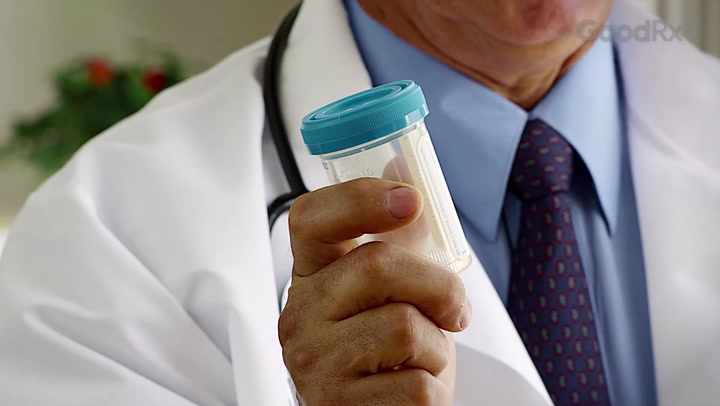
How Much Does a PET Scan Cost?
Key takeaways:
A positron emission tomography (PET) scan is a nuclear imaging procedure that measures metabolic processes in different parts of the body. The scan is typically used to detect cancer as well as brain and heart conditions.
Without insurance, a PET scan can cost from about $1,300 to more than $4,600. With insurance, your out-of-pocket costs will depend on how your plan covers PET scans and where the procedure is performed.
You can shop for PET scan pricing information through hospital price transparency sites or by asking about costs upfront from a variety of healthcare facilities. If you are uninsured or plan to pay the bill without insurance, most healthcare providers must give you a Good Faith Estimate of costs if you request one.

Positron emission tomography — better known as a PET scan — is a nuclear imaging procedure that measures metabolic processes and identifies abnormal tissue in different parts of the body. PET scans are typically used to detect cancer as well as brain and heart conditions. They can also be combined with other imaging studies, such as MRI and CT scans.
Because a PET scan is a type of nuclear medicine, a tiny amount of radioactive substance is injected during the procedure to assist in examining tissue.
How much does a PET scan cost?
Many factors may impact the price of a PET scan, including:
Whether you have insurance
Your location
The type of facility where you have the procedure
Procedure cost
Facility fees
Medications for pain and/or a sedative
Search and compare options
MDsave, a price-shopping tool for people without insurance and those who have high-deductible health plans, lists national and regional price ranges for a PET scan. Without insurance, the national average for this procedure was about $4,637 at the time of publication.
Here are some regional averages for a PET scan purchased through MDsave (redeemable at participating providers) at the time of publication:
New Choice Health, another online marketplace where consumers can comparison-shop for procedure costs, estimates that the national average cost for a PET scan is $5,750. The organization’s data determined that the target fair price for a PET scan is $2,000, with or without insurance. Going to an outpatient facility instead of a hospital can save you thousands of dollars — $2,250 versus $7,275, according to New Choice Health data. Whether you have a full-body PET scan or imaging on a smaller section of the body also can influence your cost.
PET scans for prostate cancer: PET scans are used to determine if prostate cancer has spread to other parts of the body. Learn more about when you need a PET scan and what to expect.
Lung cancer detection: A PET scan can detect pulmonary nodules, which can be an early sign of lung cancer.
Types of imaging tests: You may need an imaging test, such as a CT scan or X-ray, to help diagnose your condition. Learn about the differences between the tests and when you should use one instead of the other.
Does Medicare cover PET scans?
If you have original Medicare, a PET scan is covered by Part B when your doctor or healthcare provider orders one to treat a medical condition. After you meet your Part B deductible, you pay 20% of the Medicare-approved amount if you get the PET scan in a doctor’s office or independent diagnostic testing facility.
If you get the PET scan at a hospital as an outpatient, you will also pay the hospital a copayment that may be more than 20% of the Medicare-approved amount. In most cases, this amount can’t be more than the Part A hospital stay deductible.
Before October 2023, original Medicare coverage for amyloid PET scans (which are not invasive) was limited to once in a lifetime. The only other covered test to measure amyloids in the brain involved an invasive spine puncture. Now, amyloid PET scans can be covered by Medicare, because confirmation of these plaques is required to prescribe new treatments that slow the progression of Alzheimer’s disease.
If you have Medicare Advantage, check your plan to determine if PET scans are covered.
How do other insurance plans cover PET scans?
Many health insurance plans cover PET scans. Here’s more about how yours may be covered:
Medicaid has mandatory benefits that don’t include PET scans, but the procedure may be covered by the program in your state or territory.
Private health insurance plans typically cover PET scans, but you may be responsible for meeting a deductible as well as other costs, such as copays and coinsurance.
Tricare covers PET scans in certain circumstances, such as for the detection of particular cancers, as well as diagnosis and management of seizure disorders.
Read more like this
Explore these related articles, suggested for readers like you.
How can I shop for PET scan prices?
Hospital price transparency can help you shop for PET scan pricing information. But, as mentioned earlier, having this imaging procedure at a hospital could be more costly than having a PET scan in an outpatient setting.
If you self-pay or don’t have insurance, you can request a Good Faith Estimate (GFE) for your PET scan to find out expected charges and fees. You can ask for a GFE from facilities such as:
Hospitals
Some surgical centers
Lab centers
Imaging centers
Federally qualified health centers
Rural health centers
If the final bill for your PET scan is $400 or more above the GFE you received before the procedure, reach out to the healthcare facility or provider. Ask if they can update the bill to match the GFE, or try to negotiate a lower price. You also should ask if you're eligible for any financial assistance programs.
Are PET scans worth it?
PET scans have a distinct advantage over other types of imaging, since they can detect signs of conditions that can’t be seen on other imaging studies.
Are there any potential additional costs?
You may need to take time off work for a PET scan, which typically takes 2 hours or longer, and to recover from having the scan. Losing time on the job can be a hidden cost of outpatient care.
Additionally, a follow-up appointment may be necessary to discuss results. If a condition is found that requires treatment, you may have substantial additional costs.
The bottom line
Without insurance, the cost of a PET scan can range from about $1,300 to more than $4,600. Whether you need a full-body PET scan or one that covers just a section of the body can influence what you’re billed. With insurance, your out-of-pocket costs depend on how your plan covers PET scans and where the procedure is performed.
Regardless of your insurance status, having a PET scan in an imaging center or other outpatient facility can save you money compared to having the procedure in a hospital setting. If you self-pay or don’t have insurance, you can request a Good Faith Estimate for your PET scan to help you shop for the best price and review what you will owe in advance.
Why trust our experts?



References
Centers for Medicare & Medicaid Services. (2021). Guidance on good faith estimates and the patient-provider dispute resolution (PPDR) process for providers and facilities as established in surprise billing, Part II; interim final rule with comment period (CMS 9908-IFC).
Centers for Medicare & Medicaid Services. (n.d.). The No Surprises Act’s good faith estimates and patient-provider dispute resolution requirements.
Centers for Medicare & Medicaid Services. (2022). No surprises: Understand your rights against surprise medical bills.
Centers for Medicare & Medicaid Services. (2023). Beta amyloid positron emission tomography in dementia and neurodegenerative disease.
Centers for Medicare & Medicaid Services. (2023). Hospital price transparency.
Lovelace Jr., B. (2023). FDA grants full approval to new Alzheimer's drug meant to slow disease. NBC News.
MDsave. (n.d.). PET scan: Atlanta, Georgia undefined.
MDsave. (n.d.). PET scan: Chicago, Illinois undefined.
MDsave. (n.d.). PET scan: Dallas, Texas undefined.
MDsave. (n.d.). PET scan: Denver, Colorado undefined.
MDsave. (n.d.). PET scan: Orlando, Florida undefined.
MDsave. (n.d.). PET scan: Phoenix, Arizona undefined.
Medicaid. (n.d.). Mandatory & optional Medicaid benefits.
Medicare. (n.d.). Diagnostic non-laboratory tests.
MedlinePlus. (2022). PET scan.
Poslusny, C. (n.d.). How much does a PET scan cost? New Choice Health.
Steenhuysen, J. (2023). US removes coverage curb on PET scans for Alzheimer's patients. Reuters.
Tricare. (n.d.). Positron emission tomography (PET) scan.


























